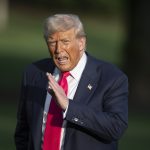Over the past several months, the U.S. economy has experienced a series of notable shifts driven primarily by changes in consumer behavior and the evolving dynamics of international trade. At the center of this transformation lies the impact of tariff policies, which have created a ripple effect across various sectors, stirring both caution and strategic recalibration among consumers and businesses alike. The economic data from April reveals some telling trends: a significant slowdown in consumer spending alongside an unprecedented plunge in goods imports. These developments unfold against a backdrop of uncertain trade relations and inflationary pressures, painting a complex picture of growth and contraction that demands careful examination.
Consumer spending remains the lifeblood of the U.S. economy, accounting for roughly two-thirds of the nation’s GDP. Yet, in April, inflation-adjusted personal consumption barely increased, edging up by a mere 0.1 percent compared to the previous month’s 0.7 percent gain. This pronounced deceleration signals a more cautious American consumer, who appears to be tightening their purse strings amidst an environment fraught with economic uncertainty. Various factors contribute to this slowdown: elevated costs of living, stagnant income growth, and the unsettling volatility introduced by ongoing tariff disputes. The hesitance to spend not only curtails immediate economic momentum but also raises questions about the sustainability of consumer-driven growth if uncertainty persists.
On the trade front, the story grows even more striking. U.S. goods imports in April took a nosedive, plunging nearly 20 percent—a historic decline largely attributed to businesses’ strategic adjustments to tariff escalations imposed by the current administration. Companies have reeled back sharply on imports across diverse categories, with industrial goods down by 31.1 percent, automotive goods off 19.1 percent, capital goods declining 3.1 percent, and consumer goods tumbling 32.3 percent. This sharp contraction is in part a reflection of front-loaded imports earlier in the year when businesses sought to circumvent higher tariffs. Now, with swollen inventories on hand, corporations have adopted a wait-and-see approach, temporarily shrinking import volumes and distorting trade flows. This inventory cycle acts as a contractionary force, slowing commerce and impacting the broader supply chain.
The tariff-driven changes in import patterns have also led to a significant narrowing of the U.S. merchandise-trade deficit. When imports decline sharply without a proportional drop in exports, the deficit naturally contracts. April’s nearly 20 percent reduction in imports shrank the trade gap considerably, which some might interpret as a positive development for GDP by reducing dependency on foreign goods. However, the underlying driver—tariff uncertainty—is far from an economic blessing. While a smaller trade deficit might sound good on paper, it masks the cost of diminished consumer choice and increased manufacturing expenses due to disrupted supply chains. The U.S. has notably reduced its import share from China, dropping from over 22 percent seven years ago to just 11 percent recently, in part due to punitive tariffs that have effectively halted certain trade flows with one of its largest trading partners. Although some recent negotiations have led to tariff reductions, the constant flux creates a climate of hesitation affecting investment decisions and spending habits alike.
Meanwhile, amidst these headwinds, business investment tells a somewhat different tale. Despite the evident caution in consumer behavior and trade adjustments, certain sectors have ramped up capital investment significantly—close to a 10 percent increase in some areas, bolstered by a private investment surge of around 22.5 percent. This divergence implies that firms may be proactively repositioning themselves, investing in domestic capacities or alternative supply chains to mitigate long-term tariff risks. Such strategic shifts highlight a dual reality: while consumers pull back, businesses are bracing themselves through calculated investment, preparing for a future where protectionist policies may reshape the global economic map. Still, this optimism is tempered by persistent uncertainties surrounding future trade relations, which continue to weigh on consumer confidence, recently sinking to levels not seen in three years.
In summary, the April economic figures reveal a U.S. economy caught between cautious consumption and shifting trade behaviors, fueled largely by the consequences of tariff policies. The sluggish growth in inflation-adjusted personal spending points to a society navigating inflation pressures and trade-related doubts with greater restraint. Simultaneously, the dramatic drop in goods imports underscores the profound changes corporations are making in response to a protectionist trade environment, leading to both a compressed trade deficit and a temporary distortion in supply chains. Although pockets of robust business investment suggest resilience and adaptation, the overarching theme is one of uncertainty casting a shadow over the economic horizon. How these trade dynamics will evolve remains a pivotal factor shaping the future trajectory of consumer confidence, business strategies, and ultimately, the health of the U.S. economy.







